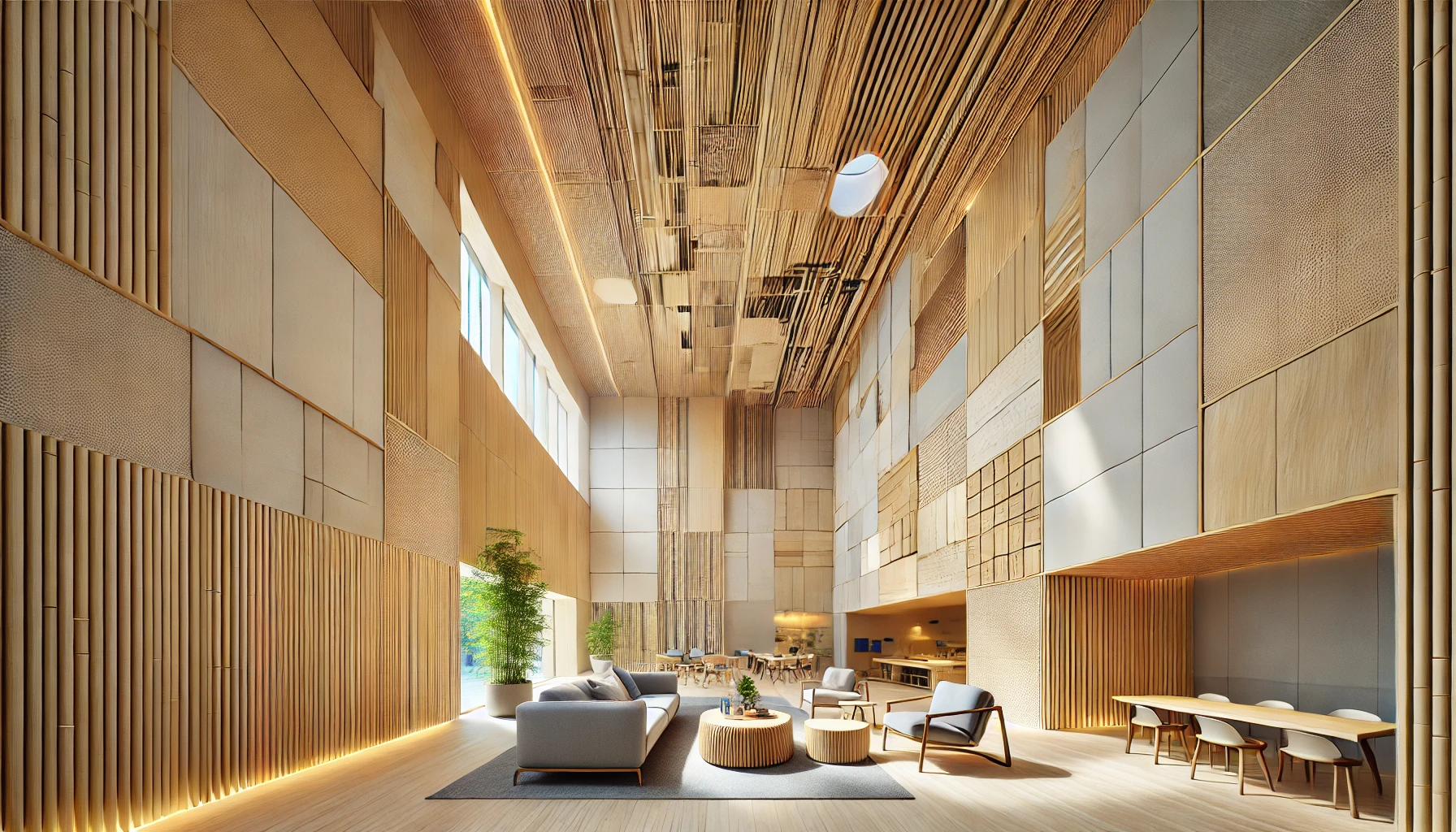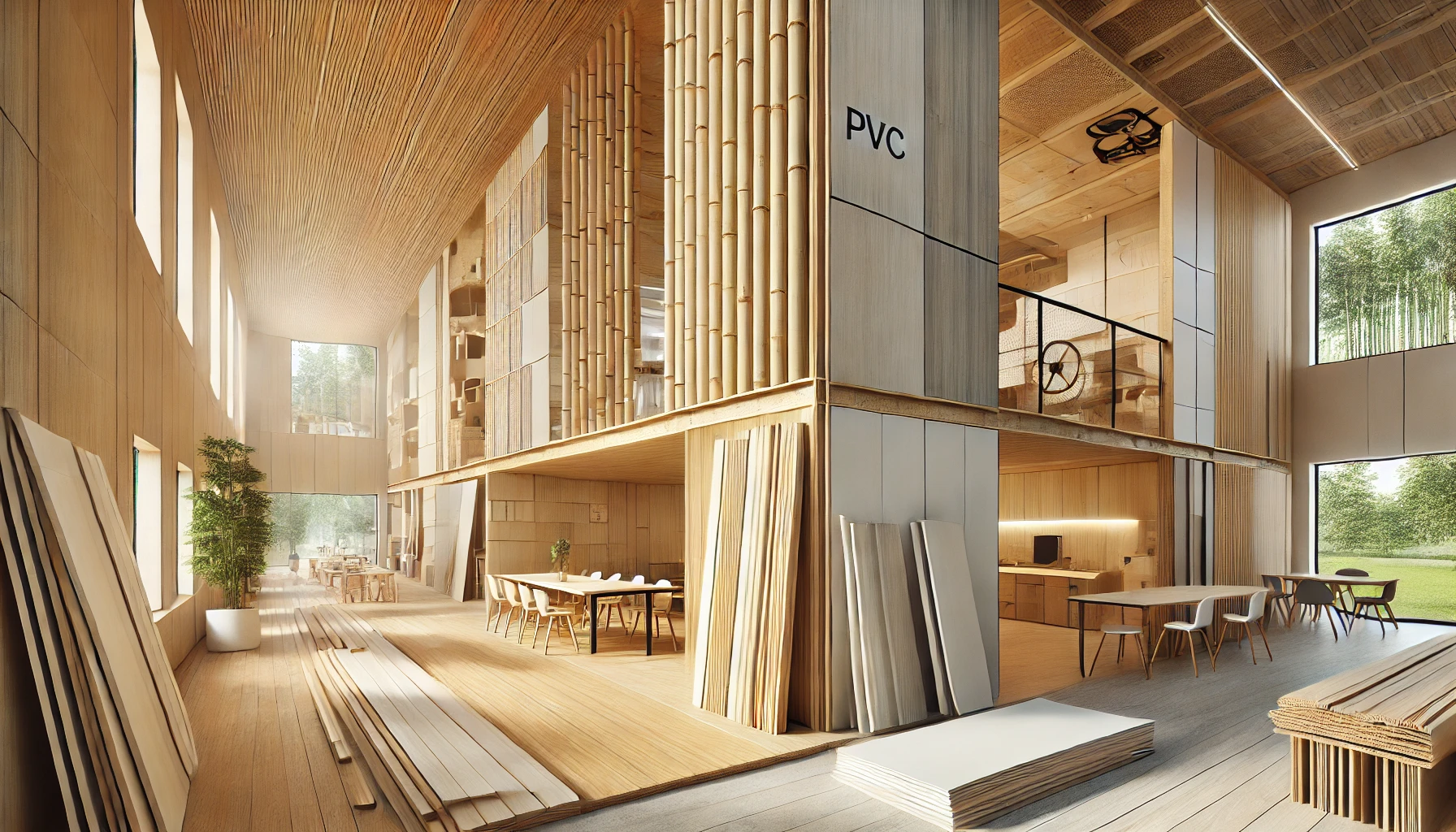As the world becomes more environmentally conscious, the construction industry is evolving to meet new sustainability standards. Builders, architects, and homeowners are increasingly searching for materials that minimize their environmental impact while still providing durability, strength, and aesthetic appeal. Sustainable building materials, such as laminated bamboo lumber, have emerged as popular alternatives to traditional options like concrete and hardwood, helping reduce carbon footprints and promote eco-friendly practices in construction.
In this blog post, we will explore why laminated bamboo lumber is a standout sustainable material and how it can be combined with other eco-friendly building materials to create high-performance, green structures. We’ll discuss the unique properties of bamboo, its advantages in construction, and its synergies with materials such as recycled steel, rammed earth, and reclaimed wood. By understanding these combinations, you’ll discover practical solutions for constructing energy-efficient, sustainable buildings that don’t compromise on design or strength.
What is Laminated Bamboo Lumber?
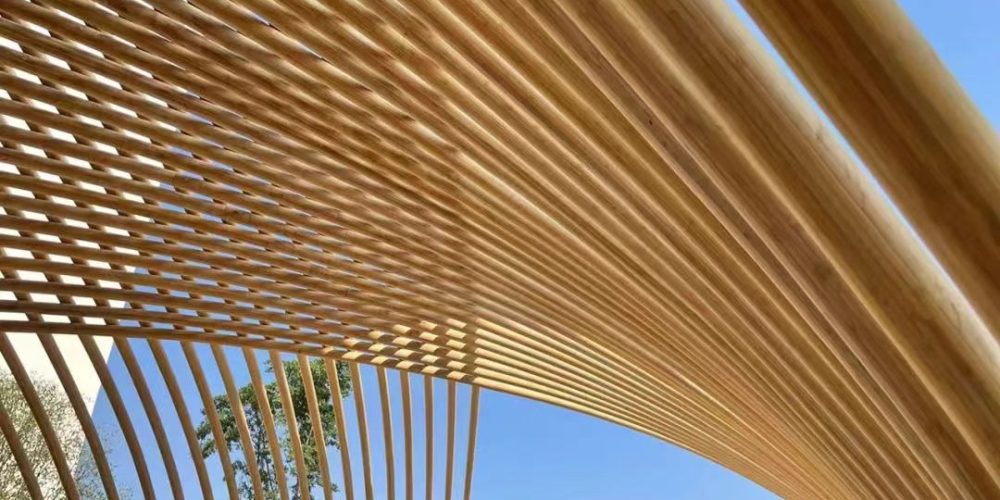
Laminated bamboo lumber (LBL) is an innovative building material derived from the fast-growing bamboo plant. Bamboo is harvested, stripped, and laminated to form planks of lumber that are then used in construction much like traditional wood. This process not only utilizes one of the fastest-renewing resources in nature but also results in a material that is incredibly strong and versatile.
LBL offers several key advantages over conventional wood and other building materials. It boasts excellent tensile strength, rivaling that of steel, while also being lightweight and highly durable. Additionally, bamboo’s rapid growth (maturing in 3-5 years compared to 20-30 years for traditional timber) makes it an environmentally friendly option. Bamboo plantations require minimal land and do not involve deforestation, further emphasizing its sustainability.
Benefits of Using Laminated Bamboo Lumber
Sustainability
Bamboo is one of the fastest-growing plants in the world, capable of being harvested in a fraction of the time it takes traditional trees to mature. This rapid renewability makes LBL a highly sustainable building material with a lower carbon footprint compared to traditional lumber or concrete. Its production generates less waste, and bamboo’s deep root systems help prevent soil erosion.
Strength and Durability
Bamboo is one of the fastest-growing plants in the world, capable of being harvested in a fraction of the time it takes traditional trees to mature. This rapid renewability makes LBL a highly sustainable building material with a lower carbon footprint compared to traditional lumber or concrete. Its production generates less waste, and bamboo’s deep root systems help prevent soil erosion.
Aesthetic Appeal
Bamboo’s natural grain and light color make it a popular choice for modern architectural designs. Its smooth texture and uniform appearance can be easily stained or treated to match different design preferences, making it suitable for both residential and commercial projects.
Cost Efficiency
Although bamboo can initially be more expensive than some traditional building materials, its long-term cost benefits are significant. Its durability means fewer replacements and repairs, while its energy-efficient properties help lower heating and cooling costs in sustainable buildings.
Laminated Bamboo Lumber with Other Sustainable Materials
Thermally Fused Laminate (TFL)
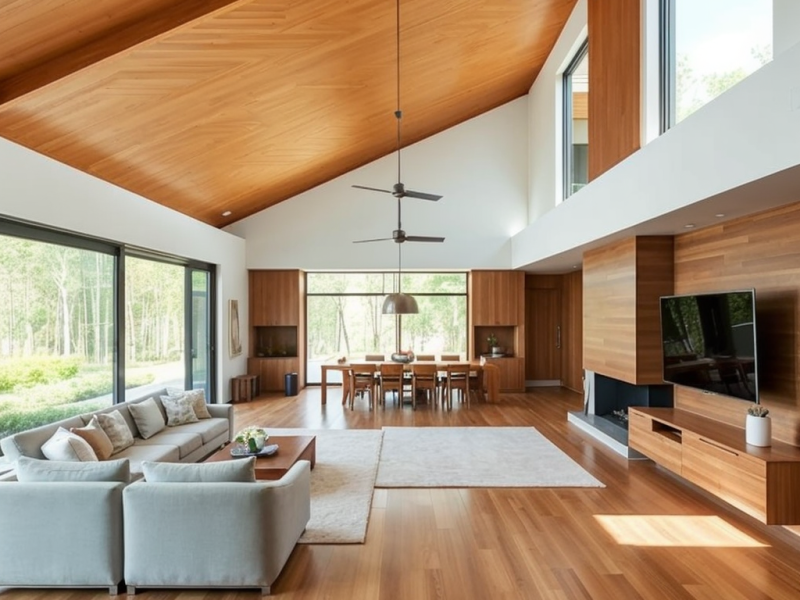
Thermally fused laminate is a durable, cost-effective material often used for surfaces like countertops, cabinetry, and furniture. Pairing TFL with laminated bamboo lumber combines the eco-friendly nature of bamboo with the strength and scratch-resistant qualities of TFL. Bamboo provides a natural, renewable core material, while TFL adds a protective layer that increases durability and ease of maintenance. This pairing is ideal for interior design elements such as cabinetry, shelving, and tabletops, offering a modern, sustainable solution that is visually appealing and highly functional.
PVC (Polyvinyl Chloride)

While PVC is a synthetic material, there are sustainable versions of PVC (such as those with low VOC emissions and recyclable compositions) that are increasingly used in green building projects. When paired with laminated bamboo lumber, PVC can serve as a protective and versatile material for outdoor applications. For example, bamboo decking or cladding can be complemented by PVC components for waterproofing, making the construction more weather-resistant and long-lasting. This combination works well for exterior elements like window frames, siding, or decking, where bamboo’s natural aesthetics meet PVC’s durability and weather resilience.
Wood
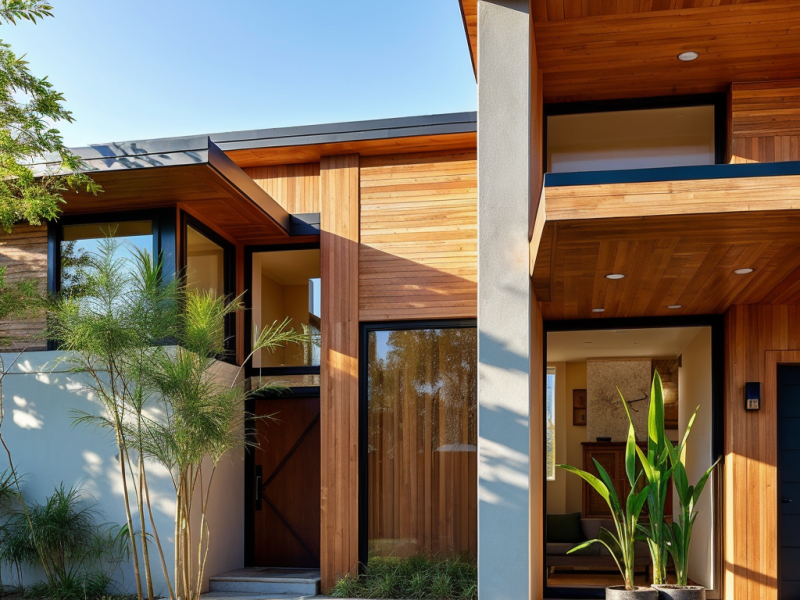
Laminated bamboo lumber pairs beautifully with a variety of traditional and reclaimed woods. While bamboo offers a smooth, uniform texture, other wood types—whether newly harvested from sustainable sources or reclaimed from older structures—bring unique grains, colors, and character to the design. The combination is particularly well-suited for floors, wall paneling, and furniture, where bamboo’s modern look can complement the rustic or classic appearance of wood. For example, bamboo could be used for structural beams or flooring, while wood is used for cabinetry or accents, providing a dynamic, visually pleasing contrast that also emphasizes sustainability.
Practical Applications
Residential Buildings

Laminated bamboo lumber paired with thermally fused laminate (TFL) can create beautiful, durable cabinetry and countertops in kitchens and bathrooms. The natural look of bamboo, combined with TFL’s protective finish, ensures long-lasting surfaces that are easy to maintain and scratch-resistant. For exterior applications, bamboo decking combined with PVC components offers excellent durability against weathering, making it a smart choice for eco-friendly homes with outdoor living areas. Homeowners who want a cohesive sustainable design can use bamboo flooring indoors, paired with wood accents like reclaimed timber beams, creating a warm and visually dynamic space.
Commercial and Public Buildings
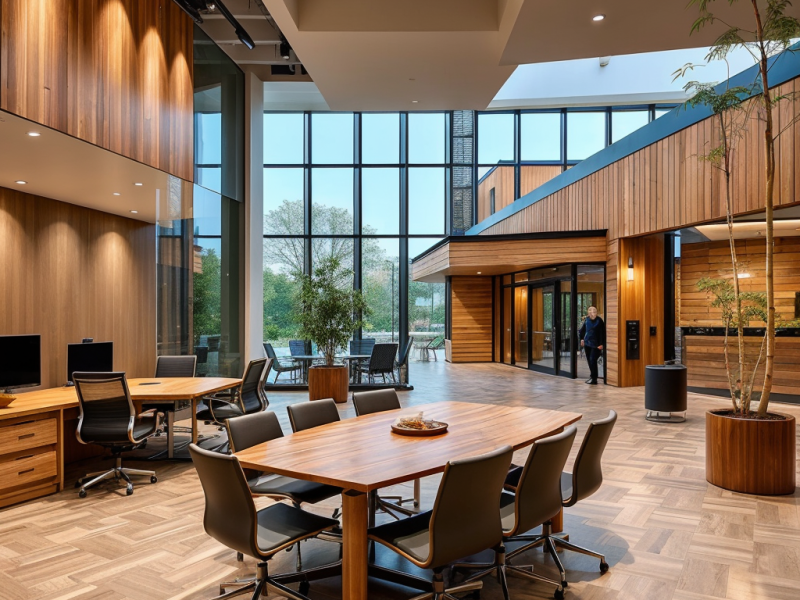
Bamboo’s modern aesthetic combined with wood or TFL makes it a popular choice for office interiors and public spaces that want to convey a contemporary, eco-conscious image. Office furniture made from bamboo with TFL surfaces offers durability and a sleek appearance, ideal for high-traffic areas like conference rooms or collaborative workspaces. In public buildings, bamboo paired with PVC for exterior siding or cladding provides a low-maintenance yet visually appealing option, reducing long-term costs while contributing to sustainability goals.
Interior Design Elements
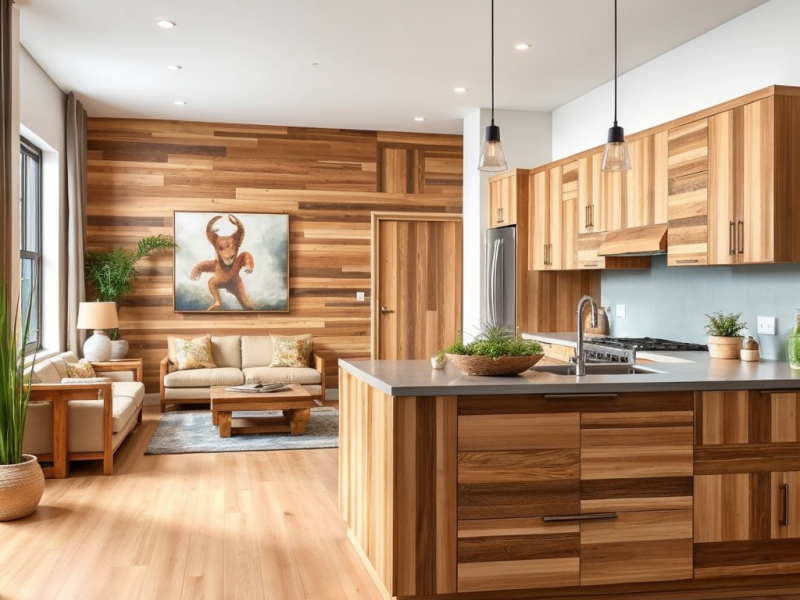
Laminated bamboo lumber and wood are an ideal pairing for interior design projects. For instance, bamboo’s clean, light finish can provide a contemporary feel when used for flooring, while accent walls or furniture made from reclaimed wood bring a rustic touch, creating a balanced, eco-friendly aesthetic. Similarly, bamboo can be used in combination with TFL for kitchen cabinetry, where TFL’s range of colors and textures complements bamboo’s natural grain, resulting in a modern, practical kitchen design.
Conclusion
As the demand for sustainable building solutions grows, combining laminated bamboo lumber with other eco-friendly materials like TFL, PVC, and wood opens up a world of possibilities for modern architecture and interior design. These pairings offer a perfect balance of aesthetic appeal, structural integrity, and sustainability, making them ideal choices for residential, commercial, and public building projects. By choosing materials like bamboo and thoughtfully combining them with other sustainable options, architects and builders can significantly reduce environmental impacts while creating beautiful, long-lasting structures.
At Coastal Custom Products, we are committed to providing high-quality, eco-friendly building materials like laminated bamboo lumber to help you meet your sustainability goals. Whether you’re working on a small home renovation or a large-scale construction project, we have the expertise and resources to support your vision. Contact us today to explore how our sustainable materials can be a perfect fit for your next project.


